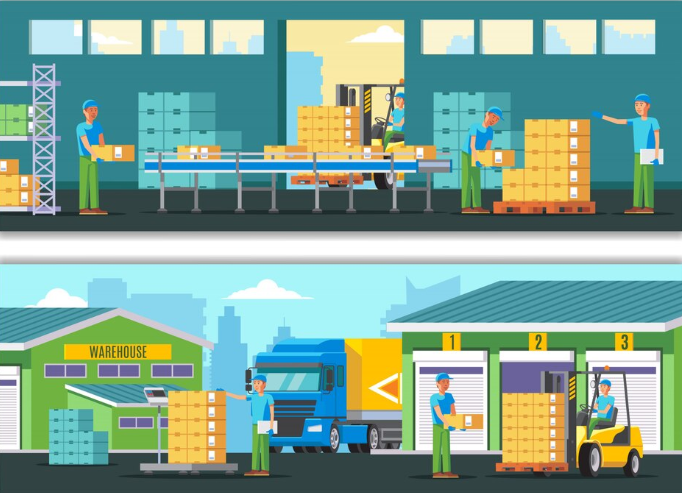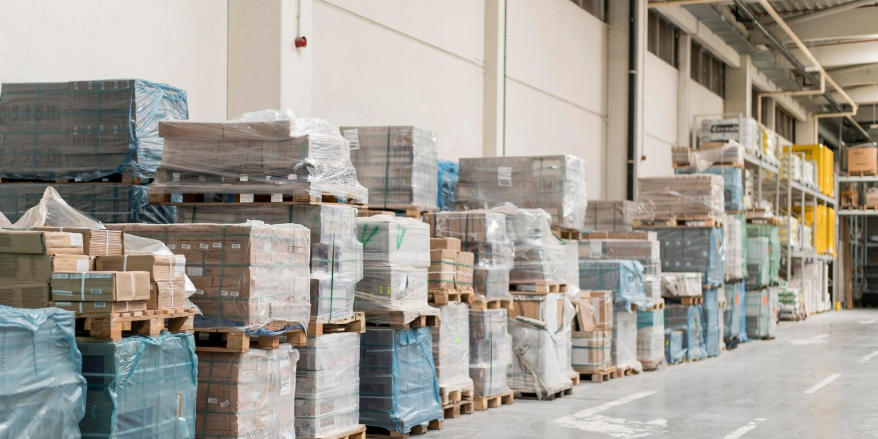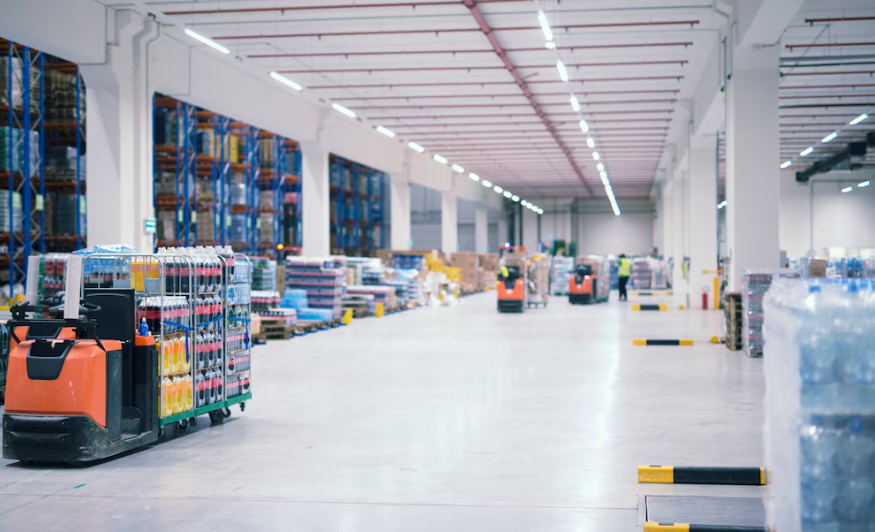Table of Contents
What Is Shipping Logistics? A Comprehensive Guide for 2025
Time: Jul 10,2025 Author: SFC Source: www.sendfromchina.com
With the global logistics market projected to reach $14 trillion by 2028, understanding shipping logistics has never been more critical. This guide offers an in-depth analysis of shipping logistics, covering its types, processes, challenges, and optimization techniques. Equip yourself with the knowledge to navigate and excel in this dynamic industry.
1. What Does Shipping Logistics Mean?
Shipping logistics refers to the orchestrated management of goods movement from origin to consumption point. It encompasses not just transportation but the integrated coordination of inventory control, warehousing, material handling, and information systems. Unlike simple "shipping," logistics operates as a multidimensional ecosystem designed to balance speed, cost, and reliability while adapting to disruptions like port congestion or demand fluctuations.In e-commerce, logistics directly impacts customer satisfaction—late deliveries can increase cart abandonment rates by 18%. Modern logistics has evolved from WWII-era "physical distribution" (PD) to today’s logistics, which integrates procurement, production, and distribution into a unified strategic framework.
2. Types of Shipping Logistics
Shipping logistics encompasses various specialized functions that collectively ensure the efficient movement of goods through the supply chain. Understanding these distinct types is crucial for businesses aiming to optimize operations, reduce costs, and enhance customer satisfaction. Below is a comprehensive breakdown of the primary types of shipping logistics:
Inbound Logistics
Inbound logistics focuses on the transportation, storage, and receipt of goods and materials coming into a business, including sourcing raw materials, managing supplier relationships, and coordinating deliveries to manufacturing or assembly plants. Efficient inbound logistics are vital for maintaining production schedules and minimizing inventory holding costs.Outbound Logistics
Outbound logistics pertains to the processes involved in moving finished products from a company to the end consumer. It encompasses order processing, packaging, transportation, and delivery. Effective outbound logistics ensure timely deliveries, which are critical for customer satisfaction and retention.Reverse Logistics
Reverse logistics involves the return flow of goods from customers back to the company, including handling returns, repairs, recycling, and disposal of products. An efficient reverse logistics system can enhance customer service and contribute to sustainability efforts.Third-Party Logistics (3PL)
Third-party logistics providers offer outsourced logistics services, including transportation, warehousing, and distribution. Partnering with a 3PL can provide businesses with scalability, expertise, and cost savings, allowing them to focus on core competencies.Fourth-Party Logistics (4PL)
Fourth-party logistics providers manage the entire supply chain on behalf of a company, overseeing multiple 3PLs and integrating operations. They offer strategic insight, advanced technology solutions, and comprehensive supply chain management, serving as a single point of contact for all logistics needs.Distribution Logistics
Distribution logistics ensures that products are efficiently delivered from warehouses to retailers or end customers, involving inventory management, order fulfillment, and transportation planning. Optimized distribution logistics are essential for meeting delivery timelines and reducing costs.Procurement Logistics
Procurement logistics deals with the acquisition of goods and services necessary for production, including supplier selection, purchasing, and inbound transportation. Effective procurement logistics contribute to cost control and supply chain reliability.Global Logistics
Global logistics manages the movement of goods across international borders, encompassing export and import processes, customs clearance, and compliance with international regulations. It requires coordination among various stakeholders to ensure smooth and timely deliveries worldwide.E-commerce Logistics
E-commerce logistics addresses the unique challenges of online retail, including high order volumes, rapid delivery expectations, and returns management. It involves integrating technology for real-time tracking, automating fulfillment processes, and optimizing last-mile delivery.Cold Chain Logistics
Cold chain logistics specializes in the transportation and storage of temperature-sensitive products, such as pharmaceuticals and perishable foods. Maintaining the required temperature range throughout the supply chain is critical to preserving product quality and safety.Green Logistics
Green logistics focuses on minimizing the environmental impact of logistics activities, including implementing energy-efficient transportation modes, reducing emissions, and adopting sustainable packaging materials. Companies are increasingly prioritizing green logistics to meet regulatory requirements and consumer expectations.Last-Mile Delivery
Last-mile delivery refers to the final step in the delivery process, where goods are transported from a distribution center to the end customer. This stage is critical for customer satisfaction and often involves challenges like traffic congestion and delivery time windows.3. Differences Between Shipping and Logistics
In the realm of supply chain management, the terms "shipping" and "logistics" are often used interchangeably. However, they represent distinct facets of the supply chain, each with its own scope, functions, and significance. Understanding the differences between shipping and logistics is crucial for businesses aiming to optimize their operations and deliver value to customers.
Definition and Scope
Shipping refers to the physical movement of goods from one location to another. The process encompasses various activities, including packaging, labeling, and transportation, which can involve multiple modes such as road, rail, air, or sea. The primary objective of shipping is to ensure that products are delivered to customers in a timely and efficient manner, thereby enhancing customer satisfaction and supporting business operations.Logistics, on the other hand, is a broader concept that encompasses the planning, implementation, and management of the flow of goods, services, and information throughout the supply chain. It involves coordinating various processes, including procurement, warehousing, inventory management, and transportation. Effective logistics management ensures that products are acquired, stored, and transported efficiently, ultimately leading to optimized operations and reduced costs.
Key Differences
Aspect |
Shipping | Logistics |
|---|---|---|
| Scope | Focuses solely on the transportation of goods. | Encompasses the entire supply chain, including procurement, storage, and distribution. |
| Function | Execution of the delivery process. | Planning, coordination, and management of supply chain activities. |
Timeframe |
Short-term, transactional. | Long-term, strategic. |
| Components | Packaging, labeling, transportation. | Inventory management, warehousing, order processing, transportation planning. |
| Objective | Deliver goods to the customer. | Optimize the entire supply chain for efficiency and cost-effectiveness. |
Interdependence of Shipping and Logistics
While shipping and logistics are distinct, they are interdependent components of the supply chain. Efficient logistics planning ensures smooth shipping operations by anticipating potential issues such as weather delays, route changes, or logistical bottlenecks and implementing contingency plans.Technological advancements, like integrated digital platforms and automation, are increasingly blurring the lines between shipping and logistics by streamlining processes, enhancing visibility, and improving decision-making.
Why Understanding the Difference Matters
For businesses aiming for growth and efficiency, understanding the separate yet connected roles of shipping and logistics is crucial. An optimized supply chain not only reduces costs but also improves overall customer satisfaction. By leveraging comprehensive logistics planning alongside effective shipping strategies, companies can improve delivery times, reduce errors, and maintain a competitive edge in their industry.4. Key Components of Shipping Logistics
Shipping logistics is a multifaceted discipline that ensures the efficient movement of goods from origin to destination. Understanding its core components is essential for businesses aiming to optimize their supply chain operations. Below are the critical elements that constitute effective shipping logistics:
Transportation Management
Transportation is the backbone of shipping logistics, involving the movement of goods via various modes such as road, rail, air, and sea. Effective transportation management encompasses route optimization, carrier selection, freight consolidation, and compliance with regulations. Utilizing Transportation Management Systems (TMS) can enhance visibility, reduce costs, and improve delivery times.Warehousing and Storage
Warehousing involves the storage of goods until they are needed for distribution. Key considerations include location selection, layout design, inventory tracking, and security measures. Advanced warehousing solutions may incorporate automation and real-time inventory systems to increase efficiency and accuracy.Inventory Control
Inventory control ensures that the right amount of stock is maintained to meet customer demand without overstocking or understocking. Techniques such as Just-In-Time (JIT), Economic Order Quantity (EOQ), and ABC analysis help in optimizing inventory levels. Accurate forecasting and real-time tracking are vital for effective inventory management.Order Fulfillment
Order fulfillment encompasses the complete process from receiving an order to delivering it to the customer, including order processing, picking and packing, shipping, and handling returns. Efficient fulfillment processes are crucial for customer satisfaction and can be enhanced through automation and integrated systems.Packaging and Labeling
Proper packaging protects goods during transit and ensures compliance with shipping regulations. Labeling provides essential information for handling, storage, and delivery. Innovative packaging solutions can reduce costs and environmental impact while maintaining product integrity.Documentation and Compliance
Accurate documentation is critical in shipping logistics, especially for international trade. Key documents include bills of lading, invoices, packing lists, and customs declarations. Compliance with legal and regulatory requirements ensures smooth operations and avoids delays or penalties.Information and Communication Technology (ICT)
ICT systems facilitate real-time tracking, data analysis, and communication across the supply chain. Implementing technologies such as RFID, GPS, and cloud-based platforms enhances transparency, decision-making, and responsiveness to market changes.Customer Service
Providing excellent customer service is integral to shipping logistics, including timely updates, responsive support, and efficient handling of inquiries and complaints. A customer-centric approach builds trust and loyalty, contributing to long-term business success.Reverse Logistics
Reverse logistics manages the return of goods from customers back to the seller or manufacturer. The process includes returns processing, recycling, refurbishing, and disposal. Efficient reverse logistics can recover value and enhance sustainability efforts.Risk Management
Identifying and mitigating risks such as delays, damages, theft, and compliance issues are vital. Implementing contingency plans, insurance coverage, and robust security measures helps in minimizing disruptions and maintaining service levels.5. What Are the Shipping Logistics Process: Step-by-Step
A typical shipping logistics process involves:- Order Placement: Customer places an order.
- Order Processing: Order details are verified and prepared.
- Inventory Management: Ensuring products are available.
- Packaging: Products are securely packed for transit.
- Transportation: Goods are shipped via chosen mode.
- Customs Clearance: For international shipments, ensuring compliance with regulations.
- Delivery: Products reach the end customer.
- Returns Management: Handling product returns if necessary.
6. Challenges in Shipping Logistics
The shipping logistics industry is navigating a complex landscape marked by multifaceted challenges. From geopolitical tensions to technological vulnerabilities, these obstacles impact efficiency, cost, and reliability across global supply chains. Understanding these challenges is crucial for businesses aiming to build resilient and adaptive logistics strategies.
Geopolitical Instability and Trade Disruptions
Global trade is increasingly affected by geopolitical events. For instance, the Red Sea crisis, marked by Houthi attacks on commercial vessels, has led major shipping companies to reroute vessels around the Cape of Good Hope, adding significant time and cost to shipments . Similarly, the 2024 U.S. port strike involving over 47,000 workers disrupted operations across 36 ports, highlighting the vulnerability of supply chains to labor disputes.Rising Operational Costs
The industry faces escalating costs due to fuel price volatility, increased insurance premiums, and inflation. For example, freight rates have surged in response to route diversions and heightened risks . Additionally, labor shortages and wage inflation contribute to higher operational expenses, with the logistics sector experiencing a 9.5% year-over-year increase in labor costs.Infrastructure Limitations and Environmental Factors
Aging infrastructure and environmental challenges impede efficient logistics operations. Low water levels on the Rhine River have restricted shipping capacities, forcing vessels to operate at reduced loads and increasing freight costs . Moreover, extreme weather events and natural disasters disrupt transportation networks, necessitating robust contingency planning.Cybersecurity Threats
As logistics operations become more digitized, they are increasingly susceptible to cyberattacks. Incidents such as GPS spoofing and ransomware attacks have disrupted shipping activities, emphasizing the need for enhanced cybersecurity measures . The maritime industry's lag in adopting advanced cybersecurity protocols leaves it vulnerable to sophisticated threats.Regulatory Compliance and Environmental Standards
Evolving regulations demand greater compliance efforts from logistics providers. Stricter environmental standards, such as reduced sulfur emissions, require investments in cleaner technologies and fuels . Additionally, changes in trade policies and customs regulations, like the U.S. ending the de minimis exemption for certain imports, increase the complexity and cost of international shipping.Cargo Theft and Security Concerns
Cargo theft remains a significant issue, with organized crime rings exploiting technological vulnerabilities to impersonate legitimate freight companies. In 2024, the U.S. reported a 26% increase in cargo theft incidents, resulting in substantial financial losses and highlighting the need for improved security protocols.7. How to Optimize Your Shipping Logistics?
By implementing strategic measures across various facets of the supply chain, companies can achieve significant improvements in their logistics operations. Below are key strategies to optimize your shipping logistics:
Leverage Advanced Technology and Automation
Incorporating advanced technologies such as Transportation Management Systems (TMS) and Warehouse Management Systems (WMS) can streamline logistics operations. These systems facilitate real-time tracking, route optimization, and efficient inventory management, leading to reduced errors and improved decision-making. Automation tools can also expedite order processing and enhance overall operational efficiency.Optimize Packaging
Efficient packaging not only protects products but also reduces shipping costs. By minimizing package dimensions and using lightweight materials, businesses can lower dimensional weight charges imposed by carriers. Additionally, adopting sustainable packaging solutions aligns with environmental goals and can enhance brand reputation.Consolidate Shipments
Combining multiple orders into a single shipment can lead to significant cost savings. This approach reduces the number of deliveries, lowers transportation expenses, and minimizes the environmental impact. Implementing a consolidation strategy requires effective coordination and communication across departments.Negotiate with Multiple Carriers
Engaging with various shipping carriers allows businesses to compare rates and services, leading to more competitive pricing. Establishing relationships with multiple carriers also provides flexibility and reduces dependency on a single provider, mitigating risks associated with service disruptions.Implement Real-Time Tracking and Visibility
Providing customers with real-time tracking information enhances transparency and trust. Advanced tracking systems enable businesses to monitor shipments, anticipate delays, and proactively address issues, thereby improving customer satisfaction and loyalty.Utilize Data Analytics for Continuous Improvement
Analyzing logistics data helps identify patterns, inefficiencies, and areas for improvement. Key performance indicators (KPIs) such as delivery times, order accuracy, and transportation costs provide insights that inform strategic decisions and drive continuous optimization.Adopt Sustainable Logistics Practices
Incorporating eco-friendly practices in logistics operations not only benefits the environment but can also lead to cost savings. Strategies include optimizing delivery routes to reduce fuel consumption, using energy-efficient transportation modes, and implementing recycling programs within warehouses.Enhance Last-Mile Delivery Efficiency
The final leg of delivery is often the most expensive and time-consuming. Optimizing last-mile delivery through route planning, local distribution centers, and alternative delivery methods such as lockers or pickup points can improve efficiency and customer experience.Train and Empower Staff
Investing in employee training ensures that staff are knowledgeable about best practices and technologies in logistics. Empowered employees are more likely to identify and implement improvements, leading to enhanced operational performance.Collaborate with Third-Party Logistics Providers
Partnering with third-party logistics providers, like SendFromChina, can offer access to specialized expertise, advanced technologies, and scalable solutions. 3PLs can manage various aspects of logistics, allowing businesses to focus on core competencies while benefiting from improved efficiency and cost-effectiveness.8. Conclusion
Shipping logistics is a complex yet vital component of global commerce. By understanding its intricacies and proactively addressing challenges, businesses can ensure smooth operations and customer satisfaction. Leveraging expert partners like SendFromChina can further enhance your logistics strategy, driving success in today's competitive market.9. FAQs
Q1: What is the main goal of shipping logistics?
To ensure the efficient, timely, and cost-effective movement of goods from origin to destination.Q2: How does shipping differ from logistics?
Shipping refers to the physical transportation of goods, while logistics encompasses the broader planning and coordination of the entire supply chain.Q3: What are common challenges in shipping logistics?
Challenges include rising fuel costs, regulatory compliance, technological integration, environmental concerns, and supply chain disruptions.Q4: How can businesses optimize their shipping logistics?
By implementing advanced technologies, diversifying transportation modes, strengthening supplier relationships, continuous training, and adopting sustainability initiatives.Q5: Why choose SendFromChina for shipping logistics?
SendFromChina offers comprehensive services, customized solutions, advanced tracking, and an expert team to streamline your logistics operations. Post Views:1090
Post Views:1090
Copyright statement: The copyright of this article belongs to the original author. Please indicate the source for reprinting.
Previous Post
The True Cost of Kickstarter: 2025 Fees, Hidden Expenses, and Budget Tips
Next Post
What Does Order Fulfilled Mean? A Complete Guide for Online Shoppers
TAGS
Hot Research
Recent News
- Third Party Logistics Definition, Process, and Advantages
- What Is Ecommerce Fulfillment? The Definition, Process, and Benefits
- Where Does Shein Ship From
- Why DHL Express Is the Best Courier for Fast International Shipping in 2026
- FedEx International Economy Shipping Guide: Rates, Speed, and Business Benefits
Get a Custom China Fulfillment Solution with FREE Storage for 30 Days
 Want to know about our services, fees or receive a custom quote?
Want to know about our services, fees or receive a custom quote?
 Please fill out the form on the right and we will get back to you within a business day.
Please fill out the form on the right and we will get back to you within a business day.
 The more information you provide, the better our initial response
will be.
The more information you provide, the better our initial response
will be.





 TAGS:
TAGS: